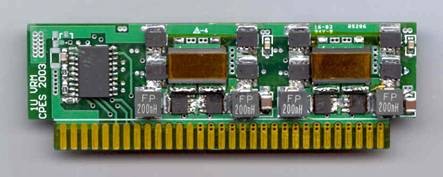LIBRARY
A New Power Management Architecture for Laptop Computers

The problem was that existing VRMs were too slow to response the generation (Pentium 4, and beyond) of microprocessor's energy demand. The solution was to use ever-larger numbers of capacitors to provide the required energy-switching response, but this solution had become costly, bulky, and increasingly unworkable.
To meet this challenge, the Center for Power Electronics System (CPES), an engineering research center headquartered at Virginia Tech, established a mini-consortium of companies with a keen interest in the development of new VRMs for current and future generations of microprocessors. This consortium consisted of 11 companies, including Intel, Hitachi, Intersil, National Semiconductor, Texas Instruments, Power-one, HIPRO, Infineon, Artesyn, TDK and Delta Electronics. The CPES team developed a multi-phase VRM module using an innovative approach based on paralleling multiple Buck mini-converter cells.
This new multi-phase VRM has now been adopted by the entire industry as standard practice. Every computer using Intel Pentium III or Pentium 4 microprocessors uses CPES' multi-phase VRM approach as the power management solution. This technology can also be fully integrated in the microprocessor to provide superior performance for future microprocessors, with ever-increasing speed and data processing capacity.






















































































